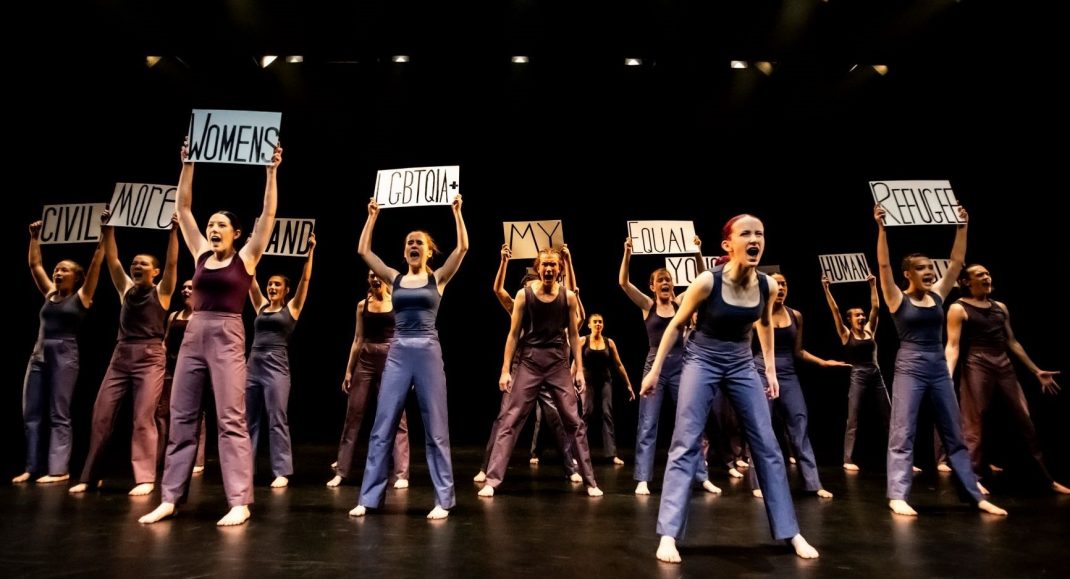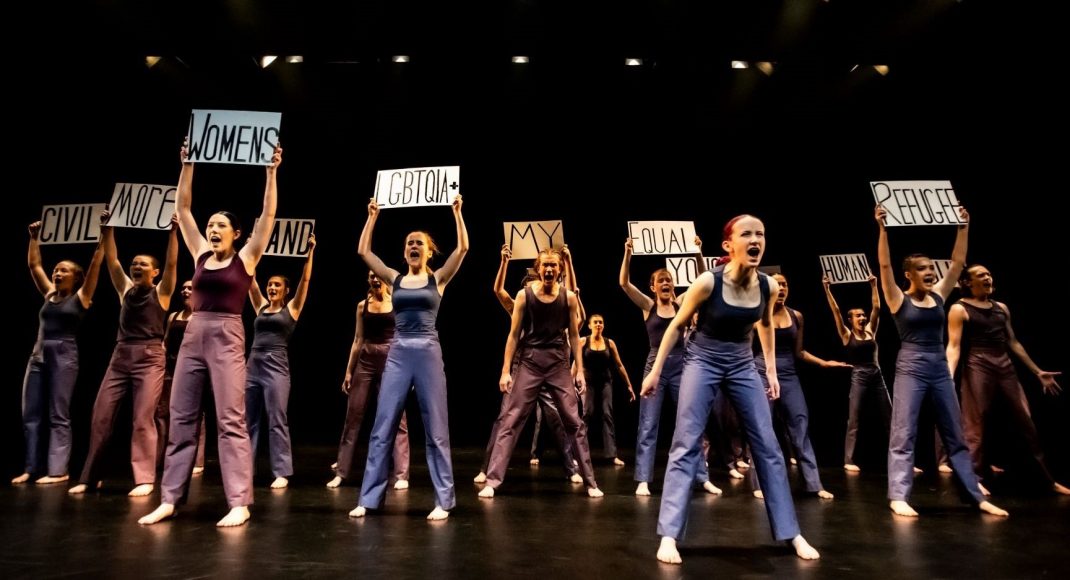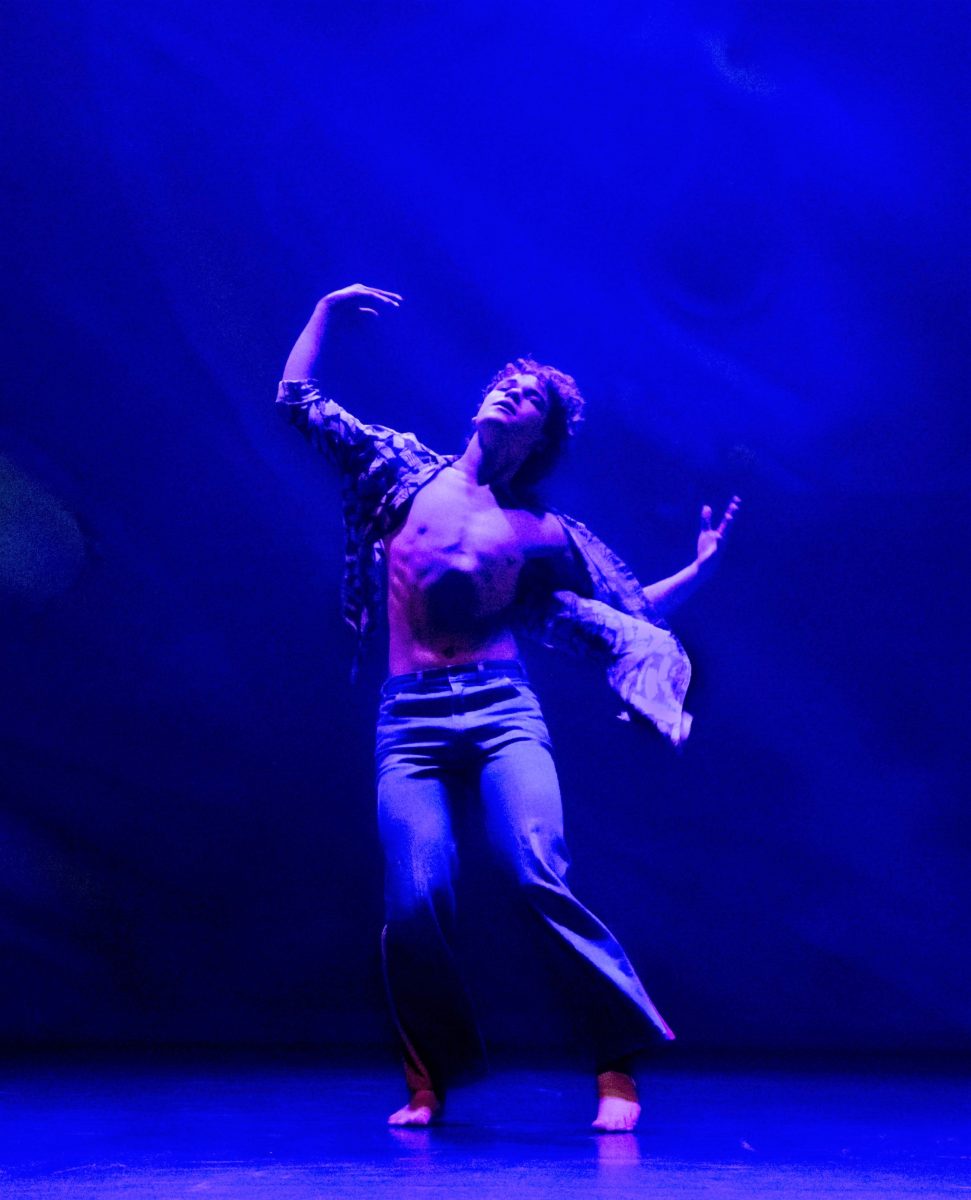20 May 2021. The Playhouse, Canberra Theatre Centre
The latest offering from the Quantum Leap Ensemble, an intrinsic part of the structure of Canberra’s QL2 Dance, has the title REBEL (short version). For a while I thought of this as a noun—who has not been a rebel at some stage in one’s life? But, as the work unfolded, it was clear that the title was more properly seen as a verb—it is the action that is at the heart of the work, although of course those who carry out the action are nevertheless the rebels.
As the full title suggests, REBEL was in three parts. It began with Then, a look back at the rebellious period of the 1960s and its moving into the 70s. Hippydom was before our eyes in the outrageous fashion, the hugely expressive dance moves, and the pleasure of being oneself.
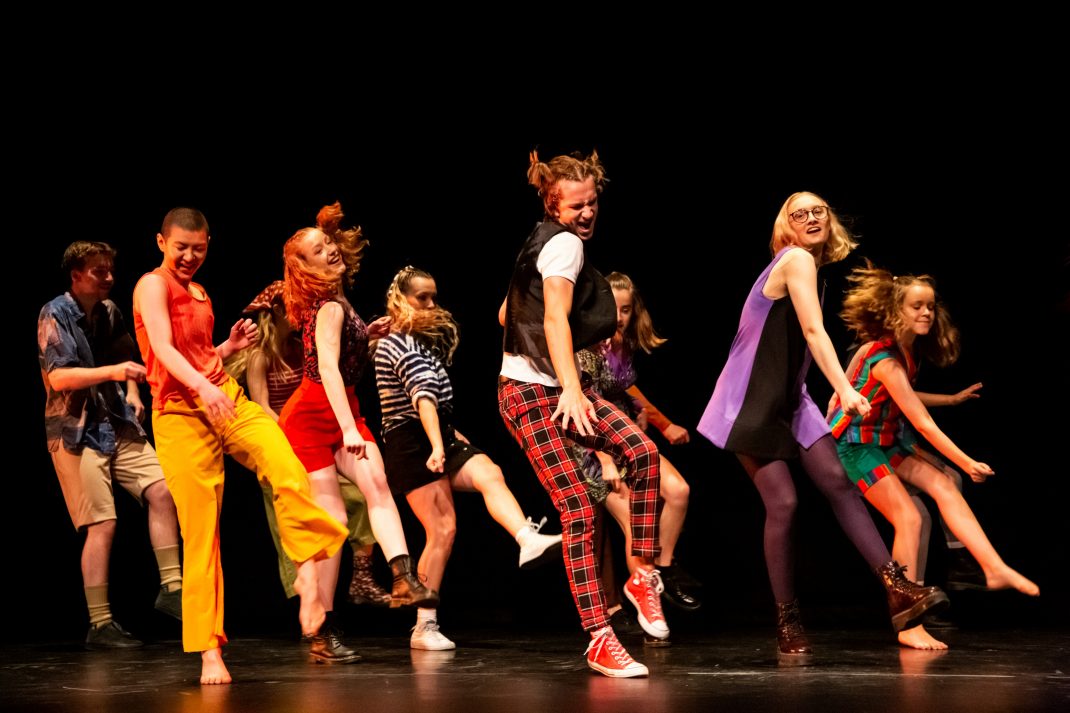
This section, choreographed by Ruth Osborne and Steve Gow, had the audience clapping and cheering the dancers along, and no doubt dancing along themselves—in spirit.
But there was more to the Hippy era than this freedom to love, dance, and dress as one pleased. Vietnam was a focus of demonstrations, the feminist movement was strong, and it was a period of rebellion in many areas. This aspect was made clear by background footage, often archival and drawn from the era, assembled and projected by Wild Bear Digital.

What followed was mostly angry and confrontational. The second section, Now, was subtitled ‘Problem child’ and was choreographed by Jack Ziesing. It began with a spoken tirade from one of the performers, Toby McKnight, speaking with full-on anger at what was seen as the unacceptable social conditions of the present time.
Ziesing’s choreography worked to explain those conditions. It began with highly organised and geometrically structured movement and groupings but slowly broke into more dramatic scenes that sometimes looked like street dancing and other times as an effort to break free from conventions, or to be included as part of a wider community.
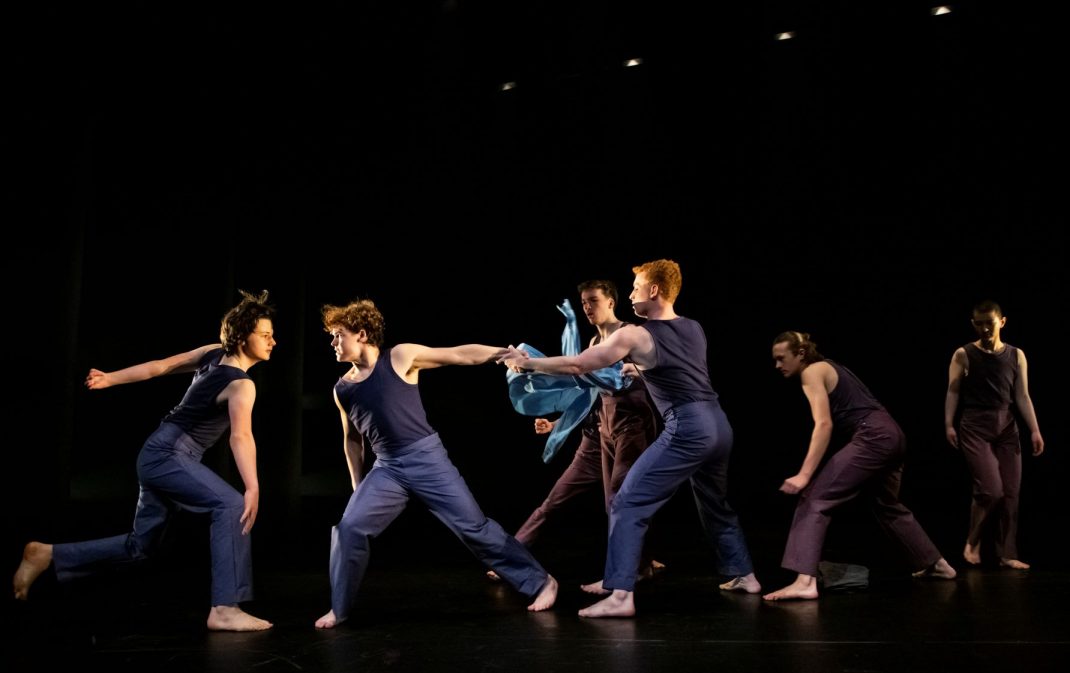
Mark Dyson’s lighting added particular strength to this section, which at times was lit red and, as a result, added a sense of anger to the action. The commissioned score from Adam Ventoura also added to the theme of anger. It was relentless, loud and percussive and brilliantly suited to the action, and vice versa.
As this section concluded, the angry young man reappeared and finished off his tirade of anger. Now slowly morphed into When?, choreographed by Jodie Farrugia. The dancers continued their anger but I missed the point of the women balancing books on their head. It reminded me of the June Dally Watkins 1950s manner of teaching young people good posture and deportment. Was it meant to suggest perhaps that books and greater knowledge hold the key to overcoming problematic issues?
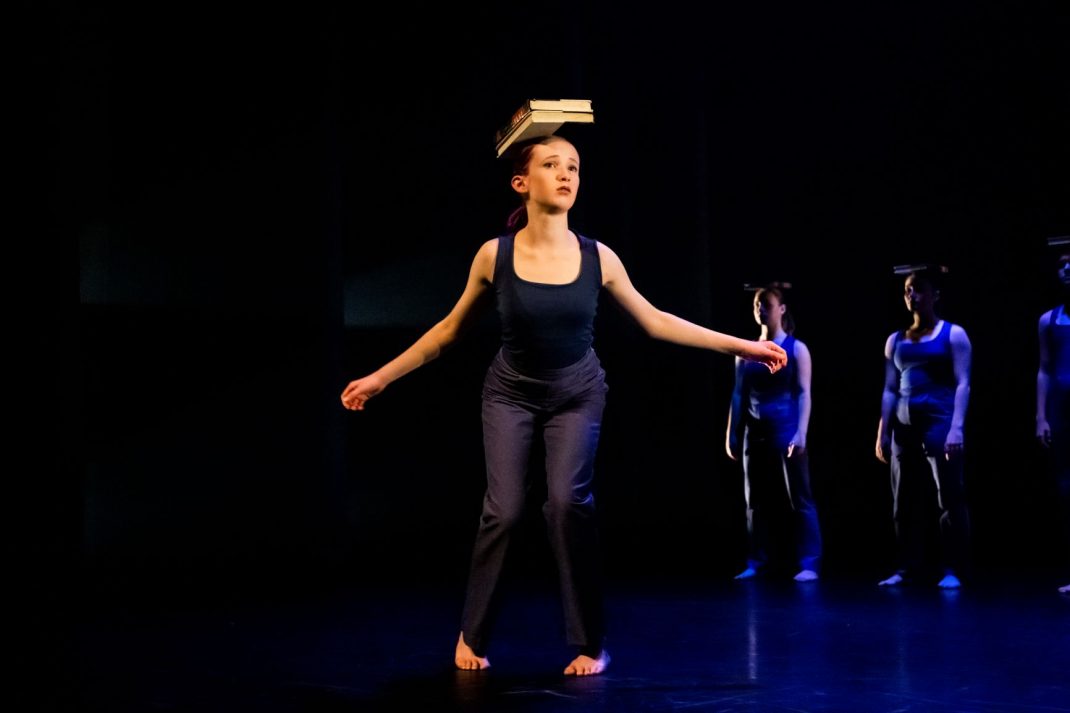
But the continuing anger towards perceived unacceptable conditions was very clear towards the end as protest placards were held up and the performers crowded the stage and glared accusingly out at the audience. Somehow, however, this demanding ending left me cold. Is the future really so hopeless? And the brief return to the joy of life after the curtain calls did little to appease.
For me the opening section was the most successful of the three. It was clearly structured, true to the period, and engaging as well thought provoking. But what struck me about this show in particular (although it probably is a feature of every QL2 show), was the commitment, intensity and strength of contemporary technique these young dancers show as they perform. I loved too the strong production values (again an ongoing feature of QL2 productions).
But surely the world is not all gloom and doom?
Michelle Potter, 22 May 2021
All photos © Lorna Sim. And what a fabulous collaboration there is between Sim and QL2!
Featured image: Final scene from ‘When?’ in REBEL. Photo: © Lorna Sim
